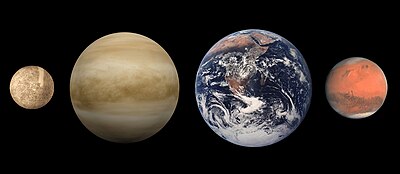|
|
Post by haney on Aug 31, 2006 17:35:32 GMT -6
Wasn't MARS supposed to be as big as the MOON? What ever happened?  |
|
|
|
Post by linedrive on Aug 31, 2006 17:45:12 GMT -6
It's not coming to our neighborhood, because we kicked Pluto out of the gang.
Linedrive
|
|
|
|
Post by oldman on Aug 31, 2006 17:46:24 GMT -6
It was a hoax.
|
|
|
|
Post by haney on Aug 31, 2006 17:52:28 GMT -6
I don't know whether to laugh, or to treat this like a pinksheet trade?......... Was it really a hoax? Shame on me............... Ricky |
|
|
|
Post by holdnolonger on Aug 31, 2006 17:53:33 GMT -6
To much red dirt, we already have enough here in the sourtern part of the states.
NASA can turn a better profit on the street with moon dust.
|
|
|
|
Post by ginaroye on Aug 31, 2006 18:26:31 GMT -6
 It takes four Moons to equal the diameter of the Earth. The moon is 6,790 (six thousand seven hundred ninety) miles around at its middle. If you could drive a car around the moon at 75 miles per hour, it would take you about three and a half days to make the trip.  Size comparison of terrestrial planets (left to right): Mercury, Venus, Earth, and Mars. Size comparison of terrestrial planets (left to right): Mercury, Venus, Earth, and Mars.The fiery appearance of Mars is caused by iron(III) oxide (rust) on its surface.[1] Mars has half the radius of the Earth and only one-tenth the mass, being less dense, but its surface area is only slightly less than the total area of Earth's dry land Planet Overview - Jupiter Jupiter is the largest planet in the solar system and it is the fifth planet from the Sun. Since all the planets are named after gods, we have to tell you which one Jupiter is. Jupiter is from Roman mythology and is the equivalent to Zeus from Greek mythology. Jupiter - What It's All About Jupiter is a planet made mostly of gases. It is part of a group sometimes called the Jovian planets (gas giants). This planet has no solid surface. Jupiter is sometimes called a failed star because it is made up entirely of gases. It would, however, have to be much larger in size than it is today to be qualified as a star. Jupiter has about 60 moons but the four largest moons were discovered by Galileo Galilei in 1610. The moons, Io, Europa, Europa Ganymede and Callisto were discovered using a telescope and are now called the Galilean moons. This was also the first observation of moons other than Earth's. There is one feature of Jupiter that is very distinct. Jupiter has something called the Great Red Spot. While this feature looks something like a big ketchup smudge on the planet, it is actually a very, very big hurricane. The spot was first discovered by Cassini (an Italian astronomer) in 1665. That means the storm has lasted hundreds of years. Even from Earth, you can see the spot using a telescope. The storm is bigger than three Earths put together. Scary, huh? Jupiter is the fourth brightest object in the sky. Jupiter is 2.5 times bigger than all the planets combined. This giant is 318 times the size of Earth. If you weigh a hundred pounds on Earth, you would weigh 236 pounds on Jupiter. A day on Jupiter is less than 11 hours. It takes Jupiter about 12 Earth years to go around the Sun Jupiter is a big, big ball of gas.  Here's your mars hoax. www.floridastars.org/marshoax.2006.html |
|